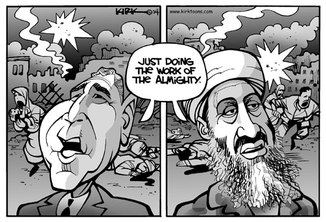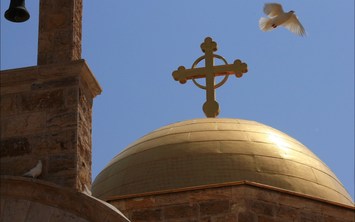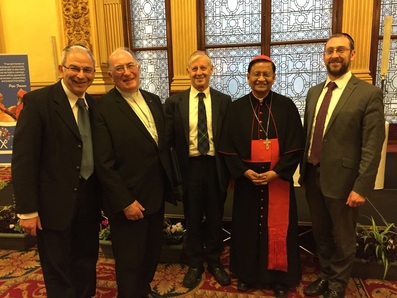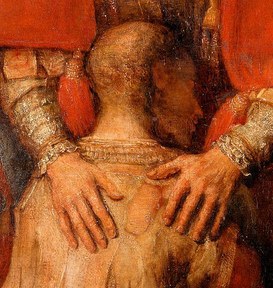
There's plenty of evidence of religion being implicated in violent conflicts throughout the world. The Ontario Consultants on Religious Tolerance list 25 instances where religion is at least implicated in violence. There's a growth in religious nationalism involving religions that have usually been associated with peace - Buddhist nationalism in Myanmar and Sri Lanka, Hindu nationalism in India, Islamic nationalism in the so-called Islamic State and plenty of examples of Christian nationalism throughout history in what was Christendom, a state that no longer exists though some religious people would like to reinstate it. I fear this kind of nationalism as it idenitifies national identity with one faith and leaves others as marginalised and excluded. In his recent visit to Scotland Cardinal Bo spoke of the need to give Hindus, Muslims and Christians the same rights as the majority Buddhist community. They need to be respected as part of society but can they be truly integrated until everyone is seen as a citizen with the right to their own faith but sharing a common civic identity - something I have come to appreciate here in Scotland since the reinstatement of the Scottish Parliament. This demands, I think, a secular society, not in the sense of being anti-religious but in the sense of respecting diversity and giving an equal voice to all no matter what their beliefs. I'm not so sure there's been an instance of a religious society where the minority were not marginalised even if treated well. I've just come back from Spain where there is much evidence of the Golden Age of Islam, often described as a time when Jews and Christians flourished under Muslim rule. This is true of course but Jews and Christians were not treated as equal citizens but given dhimmi status, whereby they had to pay a special tax and had certain positions closed to them. This idea of majority and minority citizens holds within it the seeds of discontent and the sense of the majority religion being superior to the others, something that can erupt in violence, particularly if the majority religion wants to impose its discourse and beliefs on the others and not recognise the legitimacy of their faith.
It's hard for religions not to have a sense of superiority. They all believe they have the truth, that this truth is beneficial for the well-being of human beings and have a desire to tell people about it and hopefully convert them. I'm not too sure that I know of a religion that's not missionary, even though some would assert strongly that they're not proselytising. The corollary of believing your faith has a universal truth is the notion that other's truth is not quite up to scratch. This becomes particularly dangerous when our truth is absolutised to the extent that we want to impose it on others who then become infidels or heretics , who have to be converted, punished or executed. And there's plenty of evidence in history of this being the case. Even Thomas Aqinas, a saint of the Catholic Church and a great theolgian thought it legitimate to kill heretics - to stop them leading people astray and thus sending them to hell. A question in the old catechism, which I was brought up on, stated 'what does if profit a man if he gains the whole world and suffer the loss of his own soul'. There's a sense in religions that our eternal destiny is much more important than our human life, though how we live out our human life affects our eternal destiny. Just last week one of the readings at Mass was from Mark's gospel where it said "if anyone puts a stumbling block before one of these little ones ... it would be better if a great millstone were hung around their neck and they were thrown into the sea" Then there's the Bhagavad Gita where the Lord Krishna admonishes Arjuna for his fear of engaging in warfare with members of his family and encourages him to do his duty as a warrior and engage in battle.
For me religions are implicated in violence and it's possible to find justification within religion for engaging in violence - even if this justification is based on literal interpretations of scripture. This of course is not the whole of religion and religions are as implicated in peace as they are in violence, if not more so, but I think we deny the violent side of religion to our peril. Patrick Hederman has written a book called "Kissing the Dark" in which he suggests the clergy abuse in Ireland was the result of suppressing the negative, the sinful, the seedy side of life and pretending everything was perfect. To deny the dark side of religion is to give it power over us. There is good religion but there is also bad religion and we should not be afraid to name it. There is a great diversity within all religions and those elements that perpetrate violence in the name of religion are not representative of the whole faith. But at the heart of all religions there is a pearl of great price - a wisdom which does have a universal message and can be life-giving. Sometimes religious institutions obscure it and sometimes they reveal it. it's up to believers to seek that pearl, cultivate it and witness to the force for good that religion could be in our world.
I'm reminded of a story. A father tells his child that within each of us lives a dove and a hawk, sometimes struggling with one another. The child asks, which one will win and his father says, the one we feed.





 RSS Feed
RSS Feed
